In the travel and tourism industry everyone knows that you need to prepare for peak season. Whether you’re gearing up for the winter ski season in the Alps or sunny, summer getaways in the Mediterranean, making the most of your busiest days is critical.
The peak season comes with higher revenues, but it also brings with it an increased amount of pressure to maintain top service levels and a smooth customer experience. And there’s no better way to prepare than to ensure your digital channels are in tip top shape – with the help of your customers.
Here’s how customer feedback will help your travel or tourism organisation prepare for peak season.
Travel and tourism is slowly bouncing back to its former glory. With an annual growth rate of 15.1% expected in 2022 (up to $4,548.42 billion), industry growth is expected to continue rising over the next 5 years. That’s good news for travel organisations, but it also means that there is a lot of work to be done.
Gearing up for the chaos of peak season with customer feedback
Peak season varies depending on where you are in the world. However, in the northern hemisphere these peak travel periods usually fall around November to February and June to August. That means travel and tourism organisations must anticipate these periods of ‘chaos’ and prepare for them long before they even begin.
Much like the peak shopping seasons in the retail and ecommerce industry, this is your opportunity to shine and generate higher levels of revenue. It’s also your opportunity to show your customers that your brand is there to make their booking process a smooth and hassle-free experience. That’s where customer feedback comes into play.
Staying ahead of the curve with a consistently optimised website or mobile app is your ticket to holding a competitive advantage during these periods of busyness.
As a customer feedback software provider with plenty of experience advising top organisations in the travel industry such as Air France-KLM, LuxuryEscapes and De Jong Intra Vakanties with their customer feedback programmes, let us take you through all of the ways in which customer feedback will help you prepare for peak season.
1. Helps maintain control over high volume of requests and complaints
The travel industry is an extremely competitive space, and therefore demands the highest levels of service. That being said, around peak season, many organisations are often overwhelmed by the amount of incoming requests and complaints. These can range anywhere from problems with online bookings and cancellations to a lack of useful content on digital channels or even issues with live travel planners (i.e. flight information).
Being able to cater to these requests and complaints effectively (as well as in a timely manner) is therefore pivotal to the satisfaction and loyalty of your customers. Luckily there are a number of benefits customer feedback offers when trying to keep a better pulse on these support issues.
Let’s take a look.
Customer feedback surveys help identify page or funnel errors
One of the key areas where most travel organisations experience user satisfaction issues is the booking process. For obvious reasons this is a very important part of the online journey (as it directly results in conversions), so it’s critical that these pages and funnels are fully optimised and improved continuously. By implementing feedback surveys in these areas, you can quickly and easily gauge which issues your customers encounter when trying to – for example – book a flight, reserve a hotel room or hire a rental car.
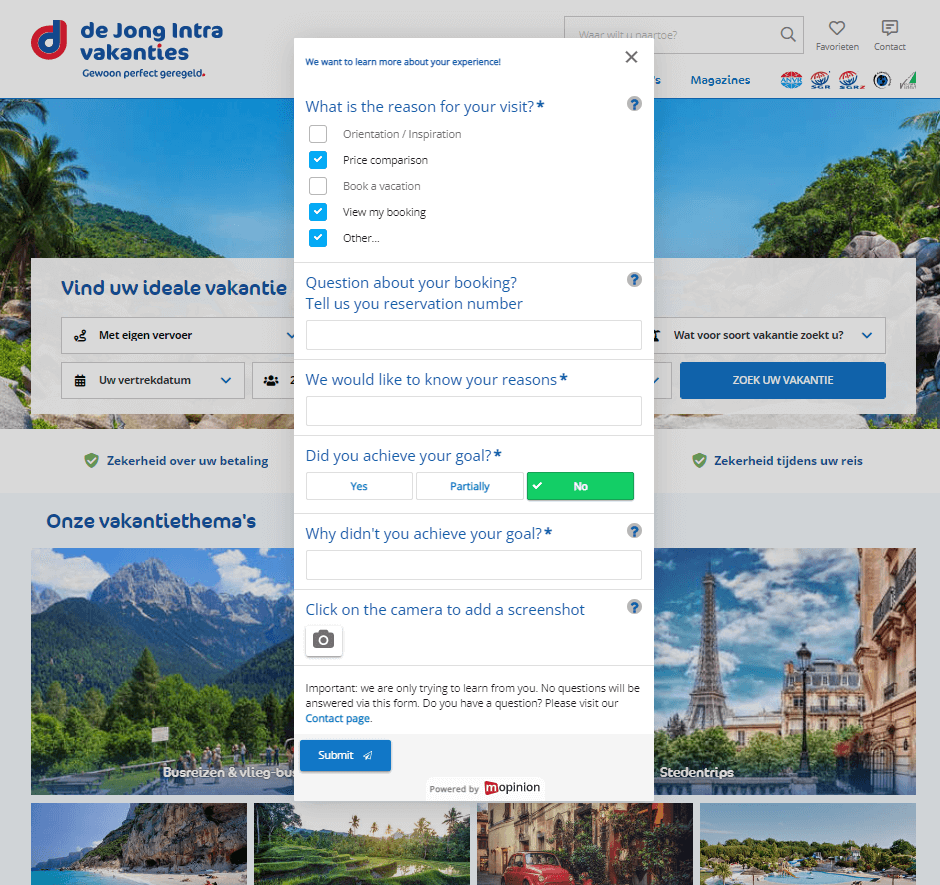
Original feedback form in Dutch. Translated for the purposes of this article.
Real-time insights enable timely resolution of issues
Another benefit of customer feedback – provided you work with a solution that offers this – is the real-time factor. The travel industry is a fast moving one, and as more and more travel organisations begin to digitise their online booking processes, the competition is becoming increasingly more fierce. Being able to serve your customers promptly and resolve issues that arise in a timely manner is therefore a top priority.
For example, your customer is struggling with one of the following, preventing them from completing the booking process:
- They are facing a user experience problem (i.e. they’ve filled in an entire form, submitted it, and because they were missing one field the entire form was erased forcing them to start over).
- There is an absence of information that will enable them to successfully complete the booking (i.e. details about the baggage costs).
Being able to identify these issues the moment they are reported (via a feedback survey within the funnel), the organisation can immediately make changes to the booking flow.
Easily recognise trends in data and know how to prioritise based on volume
Along with real-time feedback, travel organisations can also benefit from the opportunity to point out trends in their feedback data and use those trends to prioritise optimisation efforts. For example, you can monitor how scores on certain parts of your travel website or mobile app change overtime. If something drastic occurs, then you know it’s worth investigating what is happening so that you can quickly resolve the issue.
Here is an example of how this might look:
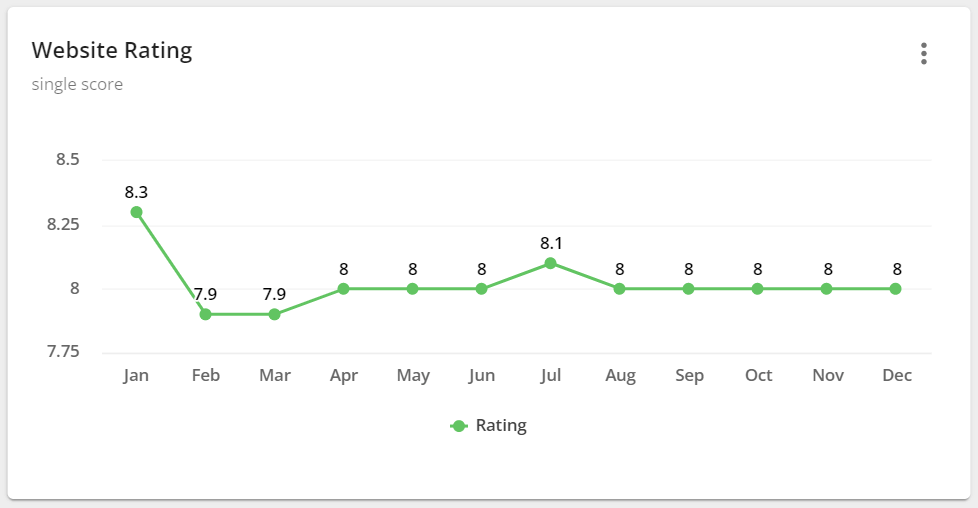
2. Aids in humanising the experience with customer insights and data
Another way to cut through the noise during peak season is by creating a customer experience that is more ‘human’ and personalised. To solve this challenge, smart travel marketers are listening to the only voices that matter: the travellers themselves. Customer service dealings are certainly a human experience, but they are also costly as they require someone to be on the phone or on chat with someone at all hours of the day.
Customer feedback – especially solutions like conversational feedback – can serve as a great and cost-effective alternative or even addition to these services. Not only is it available to your customers – whether they are booking on your website or within your mobile app – but it also measures human experiences on these channels, rather than just quantitative insights like conversion losses.
Additionally, combined with the data collected from various customer profiles on your digital channels, customer feedback can further assist in the optimisation of those channels. It enables you to understand how a particular customer profile experiences the online journey or a particular funnel within that journey. This is important because the journey of a well-seasoned traveller (e.g. frequent flyers or business travellers) can be drastically different from that of a leisure traveller or a family traveller. You can then take that information and create experiences customised to your customer profiles.

Free White Paper: Improving travel websites and apps with user feedback
A great guide for digital professionals about the importance of user feedback in a digitising travel industry.
3. Identifies the reason behind drops in online conversion
There are a lot of reasons why customers may drop off before finalising a booking. But you can’t possibly know why unless you ask them yourself. Customer feedback helps you identify why your customers or prospects leave the funnel.
It essentially provides you with an explanation for the quantitative metrics you measure. For example, let’s say your Customer Satisfaction (CSAT) score suddenly drops. This is the last thing any travel organisation wants after all…By leveraging customer feedback on your website or mobile app, you can gauge why this is happening. A survey that measures the CSAT score, accompanied by relevant follow up questions that ask for their reasoning behind their scoring (in combination with an open feedback comments section) can provide a lot of context.
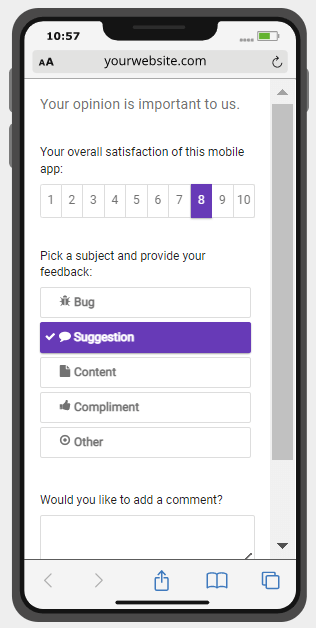
Provided that you gather feedback on more than just your website (i.e. also on your mobile app or within email), these feedback insights can also contribute to multichannel attribution. According to Digital Travel Connect, multichannel attribution is defined as the process of determining which marketing channels lead to conversions and sales, and giving each channel an appropriate amount of budget and attention accordingly. This means that your feedback can point you in the right direction with regards to which channels provide you with the highest conversion. With that information, you can invest more in the channels with which you achieve more conversions, and ensure they are fully optimised to meet the needs of your visitors.
4. Helps monitor the entire customer journey every step of the way
Customer feedback enables travel and tourism organisations to monitor the online customer journey from start to finish. This is important for peak season because the Awareness & Consideration stages actually start long before the bookings start trickling in. So businesses need to be prepared for these primary stages months ahead of time.

Awareness
This is essentially the stage in which your visitors are discovering their options. Their inspiration comes from things like social media, pictures, advertisements about the destination, etc. In other words, this is a key stage where organisations must get the traveller’s attention and provide them with the information they are seeking.
How can customer feedback help?
Therefore, having substantial information and content available on your digital channels at this stage is ideal. Customer feedback surveys can measure the performance of your content on your webpages or within your mobile app.
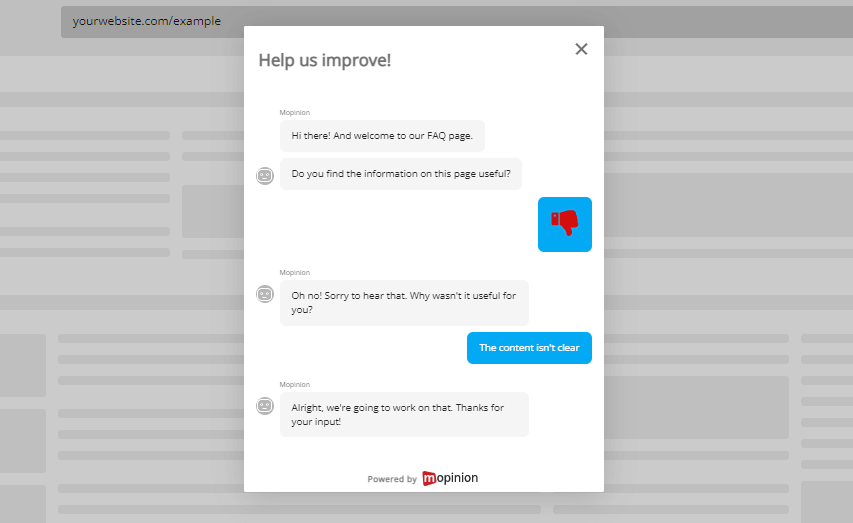
Consideration
In this stage, the customer starts looking into specific options. And how are they doing this? According to Deloitte UK’s Travel Consumer report, search engines are the most popular online planning resource. Starting here they are led to websites such as online travel agencies, airline sites/apps, travel review sites/apps and hotel sites/apps.
Having optimal online tools such as filtering and search functions will be critical in this phase. These will enable your prospects to successfully navigate your website and/or mobile app and find what they need without a hassle.
How can customer feedback help?
Customer feedback can help you tremendously in this stage. Measuring the experience in these areas is simple with either a feedback button (always visible on the page) or a pop-up survey (i.e. when the visitor spends x amount of time on the page).
Intent
By now the customer has determined what kind of a trip or accommodation they intend to book. In this stage, the comparison process begins. Customers may visit a number of different websites to compare things like pricing and availability as well as the logistics of the trip, including restaurants, popular attractions and upcoming events in the area.
In this stage, you’ll need to be able to clearly demonstrate what your services are, and similar to the previous stage ensure that the usability of your website is running smoothly.
How can customer feedback help?
Customer feedback will give you the insights you need to optimise where needed. Whether that’s by identifying ambiguities in your online content or an error in your filtering tool, it’s sure to spot usability issues quickly and quietly, giving you the means to boost conversions in this critical stage.
Decision
The last stage is when the customer actually goes through with the booking. Now that they’ve found the trip they’re looking for, it’s time to secure tickets and reservations. This stage is absolutely crucial for travel and tourism organisations as this is the conversion they need to be successful.
How can customer feedback help?
There are a lot of ways to make sure this stage goes smoothly, whether that’s by providing your visitors with feedback opportunities as listed in the previous stages or perhaps even a feedback survey that appears ‘in the moment’. For example, plenty of customers will be in the process of booking and then suddenly leave the page. Maybe they can’t find their passport, perhaps the form is giving them an error or they don’t have enough information to book. An exit feedback survey in this case would be a great way of determining why these visitors are dropping off, as well as give you insight into what needs to be done to resolve the situation.
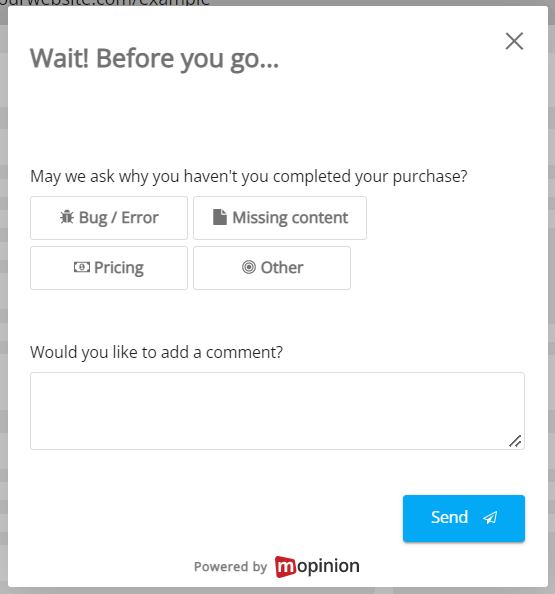
Deliver a world-class and reputable travel experience
The peak season is a time of chaos but also a time of opportunity. With the right tools in your toolbelt, you will be well-equipped to take on the influx of customers and provide a world class experience to your travellers. The wide range of benefits customer feedback provides are a testimony to that.
Discover the advantages the travel and tourism industry can unlock by collecting and analysing customer feedback following up to peak season.
Ready to see Mopinion in action?
Want to learn more about Mopinion’s all-in-1 user feedback platform? Don’t be shy and take our software for a spin! Do you prefer it a bit more personal? Just book a demo. One of our feedback pro’s will guide you through the software and answer any questions you may have.





